How to uninstall SafeDomain Guardian unwanted application
Potentially unwanted applicationAlso Known As: SafeDomain Guardian potentially unwanted application
Get free scan and check if your device is infected.
Remove it nowTo use full-featured product, you have to purchase a license for Combo Cleaner. Seven days free trial available. Combo Cleaner is owned and operated by RCS LT, the parent company of PCRisk.com.
What kind of application is SafeDomain Guardian?
While investigating suspicious websites, our researchers discovered the SafeDomain Guardian PUA (Potentially Unwanted Application). This app is advertised as a tool that can check site domains for threats and provide comprehensive safety analyses. Software within this classification usually has harmful functionalities and is considered a threat to device/user safety.
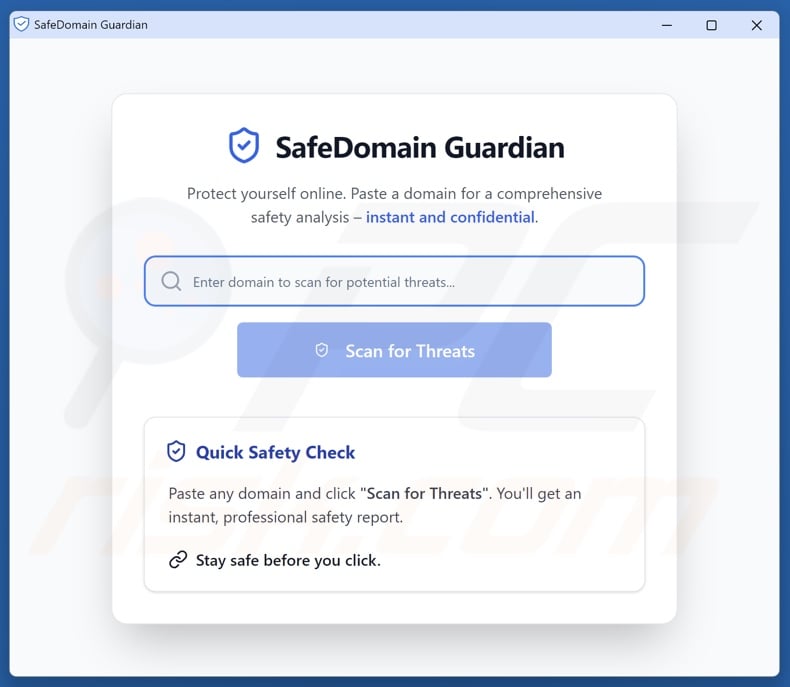
Potentially unwanted application overview
SafeDomain Guardian installation setup states that it can use all system resources. The purpose of the extensive access to these resources is unknown, as of the time of writing. However, this level of access could be abused. For example, unwanted apps have been noted abusing system resources to mine cryptocurrency and Internet resources to turn browsers into proxyware.
SafeDomain Guardian is classed as a potentially unwanted application. Typically, these apps possess abilities that endanger device and/or user safety. Data-tracking capabilities are most common, and they may be used to collect browsing and search engine histories, browser cookies, usernames/passwords, personally identifiable details, finance-related information, and so on. The gathered data can be sold to third-parties or otherwise abused for profit.
PUAs commonly exhibit functionalities associated with adware or browser hijackers. The former can also infiltrate systems alongside the latter in bundled installers. Adware is designed to generate revenue through advertising. This software's abilities can include displaying ads on various interfaces, generating redirects, and collecting information.
Browser hijackers operate by modifying browser settings to promote (via redirects) illegitimate search engines. These fake sites usually cannot produce search results, so they redirect to genuine search engines (e.g., Google, Bing, Yahoo, etc.). Browser-hijacking software is known for data-tracking as well. It must be mentioned that unwanted apps can have a wide variety of undesirable capabilities.
To summarize, the presence of unwanted applications on devices can lead to system infections, severe privacy issues, financial losses, and identity theft.
| Name | SafeDomain Guardian potentially unwanted application |
| Threat Type | PUP (Potentially Unwanted Program), PUA (Potentially Unwanted Application) |
| Supposed Functionality | Checking website domains for threats. |
| Detection Names (installer) | N/A (VirusTotal) |
| Detection Names (app) | Trapmine (Suspicious.low.ml.score), Full List Of Detections (VirusTotal) |
| Symptoms | A program that you do not recall installing suddenly appeared on your computer. Seeing advertisements not originating from the sites you are browsing. Intrusive pop-up ads. Rogue redirects. Decreased Internet browsing speed. |
| Distribution Methods | Deceptive pop-up ads, free software installers (bundling). |
| Damage | Privacy issues, unwanted pop-ups, slow computer performance, possibly monetary losses. |
| Malware Removal (Windows) |
To eliminate possible malware infections, scan your computer with legitimate antivirus software. Our security researchers recommend using Combo Cleaner. Download Combo CleanerTo use full-featured product, you have to purchase a license for Combo Cleaner. 7 days free trial available. Combo Cleaner is owned and operated by RCS LT, the parent company of PCRisk.com. |
Potentially unwanted application examples
Bionom Query Utils, Pdflash, Traiolx Custom Utils, and SafeWatch are just some of our latest articles on PUAs. In most cases, unwanted apps appear legitimate and offer "useful" functions. However, these features rarely work as promised, if at all. It must be stressed that even if a piece of software operates exactly as advertised – that does not prove its legitimacy or safety.
How did potentially unwanted applications install on my computer?
SafeDomain Guardian is promoted on deceptive pages. However, it might also be endorsed through "official" promotional sites or scam pages (i.e., ones that rely on scare tactics or social engineering). Most visitors to these webpages access them through redirects produced by intrusive ads, websites utilizing rogue advertising networks, spam browser notifications, mistyped URLs, and adware.
PUAs can also be bundled with ordinary programs. The risk of unintentionally permitting bundled content into the system is increased by downloading from dubious channels (e.g., freeware and third-party sites, P2P sharing networks, etc.) and by inattentiveness when installing (e.g., using "Quick/Easy" settings, etc.).
Intrusive advertisements spread unwanted software as well. Some of these adverts can be triggered (i.e., by being clicked) to execute scripts that perform stealthy downloads/installations.
How to avoid installation of potentially unwanted applications?
We recommend researching software and downloading it only from official/verified sources. Installation processes must be approached with care by studying terms and options, using the "Custom/Advanced" settings, and opting out of all additions (e.g., apps, extensions, tools, features, etc.).
We advise exercising caution when browsing since fraudulent and dangerous online content usually appears genuine and harmless. For example, while intrusive ads may look innocuous – they redirect to highly questionable websites (e.g., gambling, scam-promoting, adult dating, pornography, etc.).
In case of continuous encounters with such adverts/redirects, check the device and immediately remove all suspicious applications and browser extensions/plug-ins. If your computer is already infected with PUAs, we recommend running a scan with Combo Cleaner Antivirus for Windows to automatically eliminate them.
Appearance of SafeDomain Guardian application (GIF):
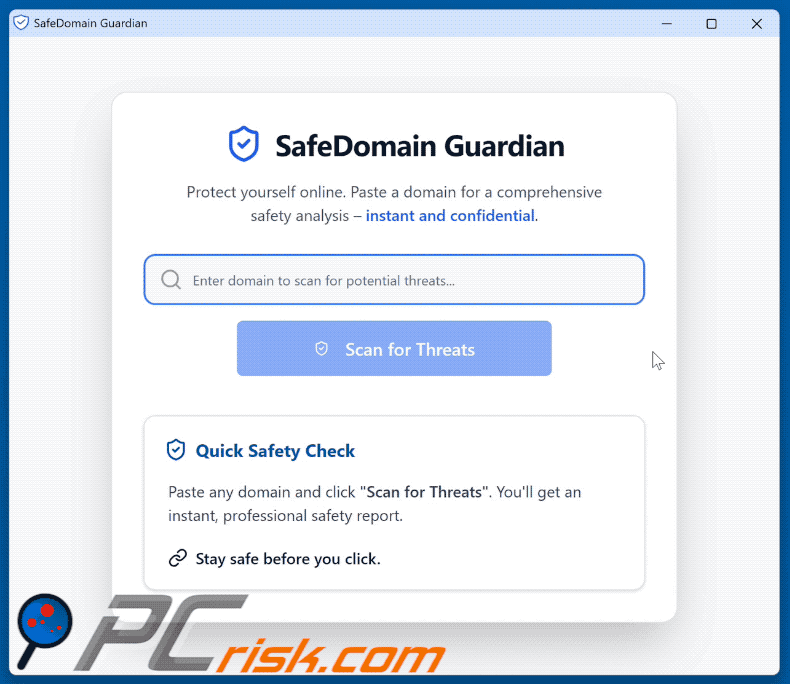
Installation setup of SafeDomain Guardian application:
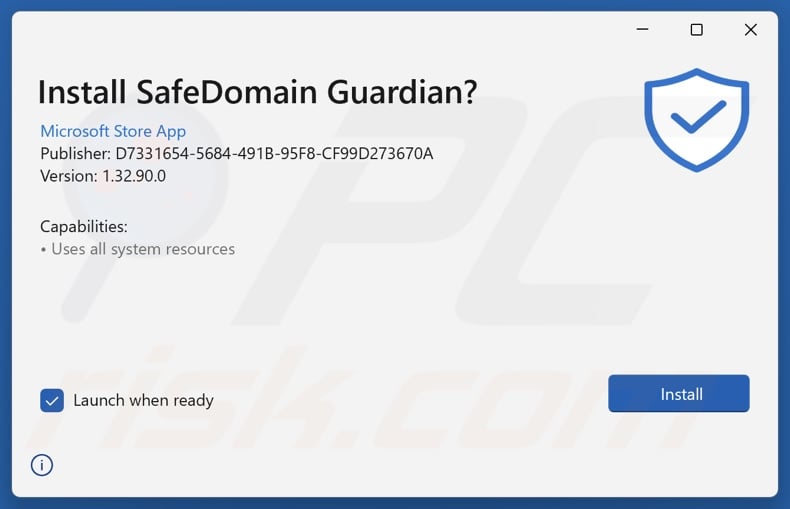
Installation folder of SafeDomain Guardian application:
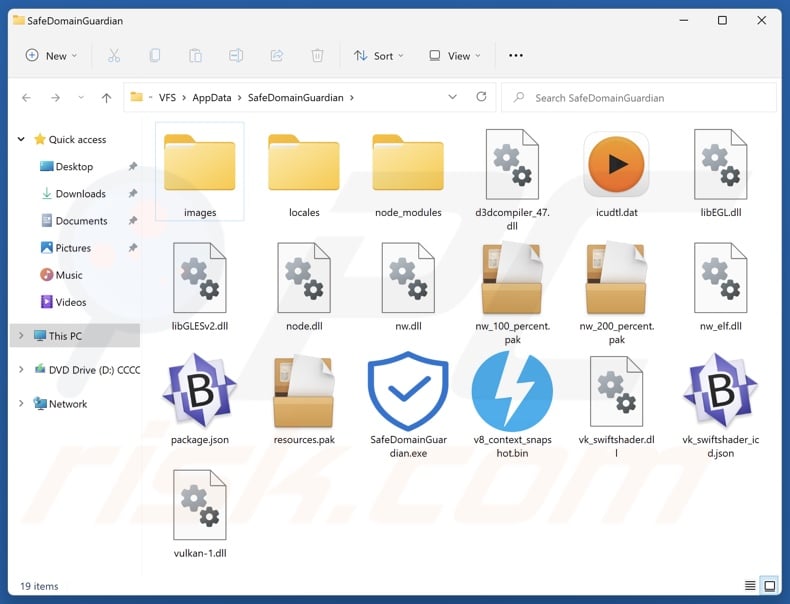
Website promoting SafeDomain Guardian application:
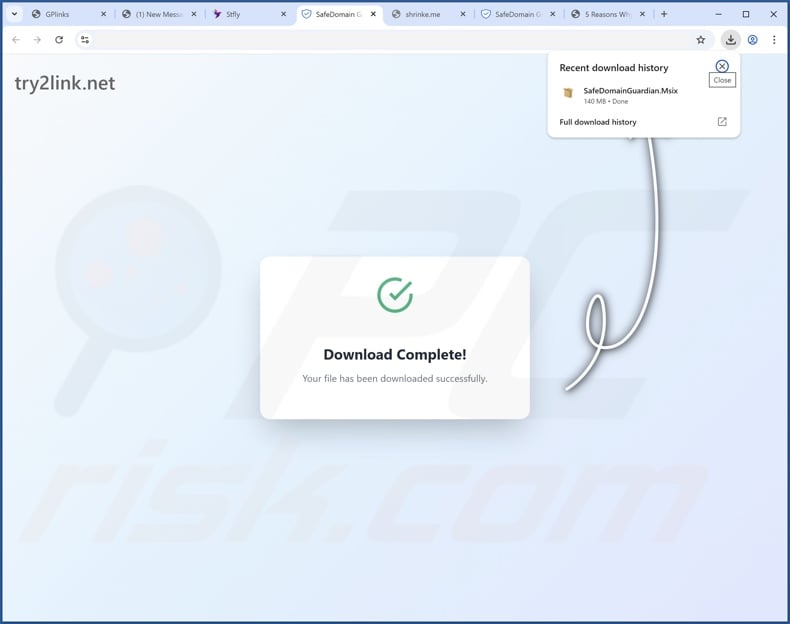
Instant automatic malware removal:
Manual threat removal might be a lengthy and complicated process that requires advanced IT skills. Combo Cleaner is a professional automatic malware removal tool that is recommended to get rid of malware. Download it by clicking the button below:
DOWNLOAD Combo CleanerBy downloading any software listed on this website you agree to our Privacy Policy and Terms of Use. To use full-featured product, you have to purchase a license for Combo Cleaner. 7 days free trial available. Combo Cleaner is owned and operated by RCS LT, the parent company of PCRisk.com.
Quick menu:
- What is SafeDomain Guardian?
- STEP 1. Uninstall deceptive applications using Control Panel.
- STEP 2. Remove rogue extensions from Google Chrome.
- STEP 3. Remove potentially unwanted plug-ins from Mozilla Firefox.
- STEP 4. Remove rogue extensions from Safari.
- STEP 5. Remove rogue plug-ins from Microsoft Edge.
Removal of potentially unwanted applications:
Windows 11 users:
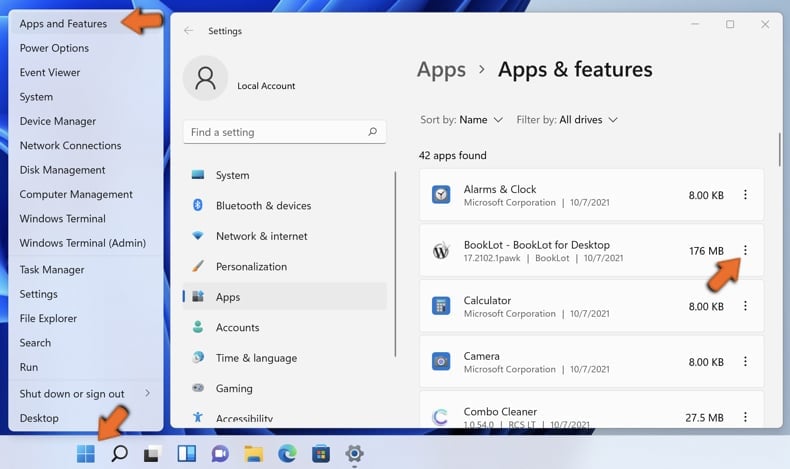
Right-click on the Start icon, select Apps and Features. In the opened window search for the application you want to uninstall, after locating it, click on the three vertical dots and select Uninstall.
Windows 10 users:
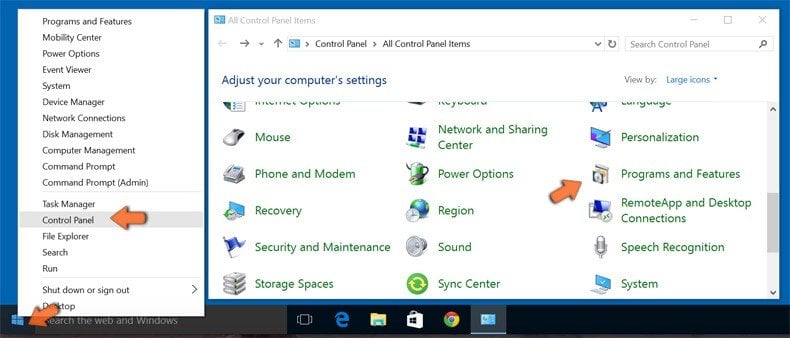
Right-click in the lower left corner of the screen, in the Quick Access Menu select Control Panel. In the opened window choose Programs and Features.
Windows 7 users:
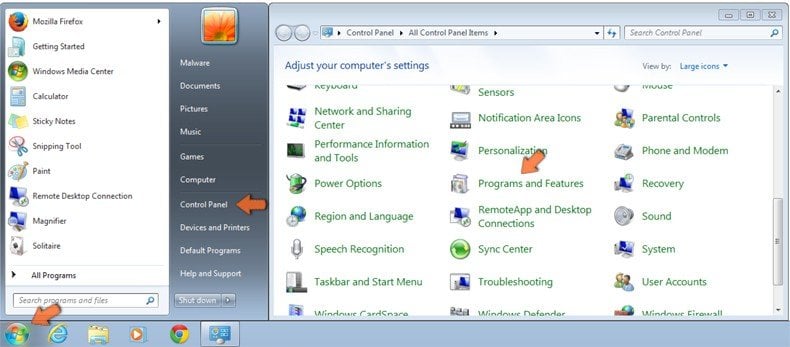
Click Start (Windows Logo at the bottom left corner of your desktop), choose Control Panel. Locate Programs and click Uninstall a program.
macOS (OSX) users:
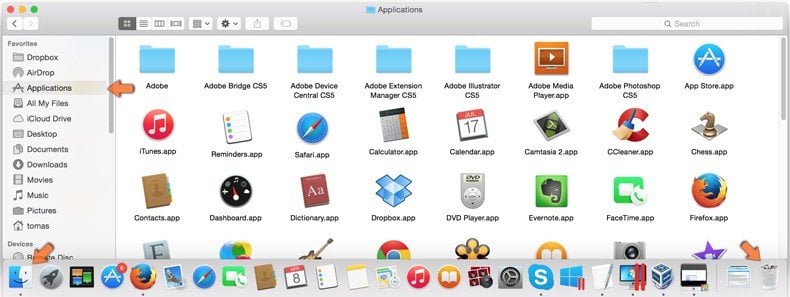
Click Finder, in the opened screen select Applications. Drag the app from the Applications folder to the Trash (located in your Dock), then right click the Trash icon and select Empty Trash.
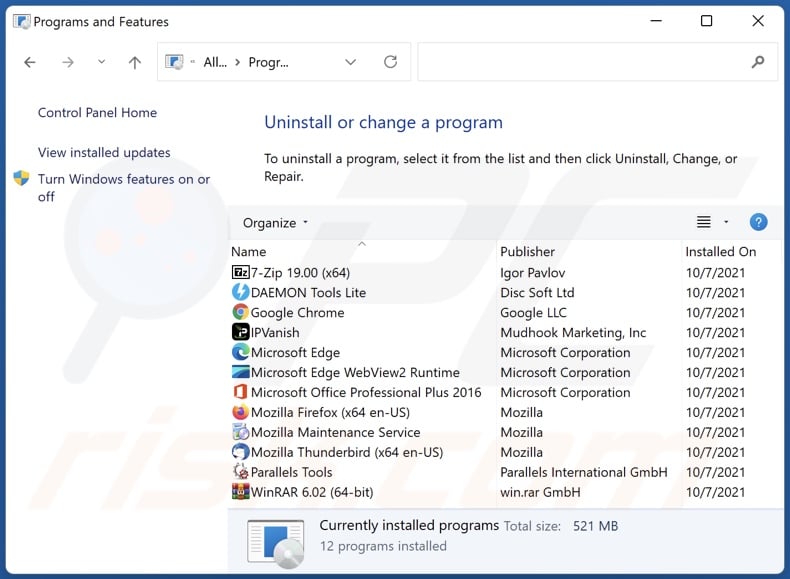
In the uninstall programs window, look for "SafeDomain Guardian" and other suspicious/recently-installed applications, select these entries and click "Uninstall" or "Remove".
After uninstalling the potentially unwanted application, scan your computer for any remaining unwanted components or possible malware infections. To scan your computer, use recommended malware removal software.
DOWNLOAD remover for malware infections
Combo Cleaner checks if your computer is infected with malware. To use full-featured product, you have to purchase a license for Combo Cleaner. 7 days free trial available. Combo Cleaner is owned and operated by RCS LT, the parent company of PCRisk.com.
Remove rogue extensions from Internet browsers:
At time of research, SafeDomain Guardian did not install any unwanted browser extensions, however, some unwanted applications can be installed together with adware and browser hijackers. If you experience unwanted ads or redirects when browsing the Internet, continue with the removal guide below.
Video showing how to remove potentially unwanted browser add-ons:
 Remove malicious extensions from Google Chrome:
Remove malicious extensions from Google Chrome:
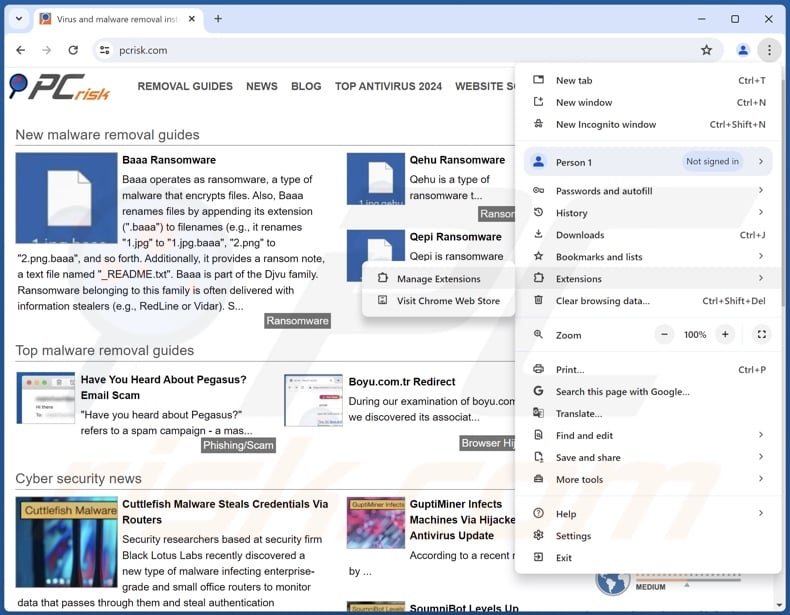
Click the Chrome menu icon ![]() (at the top right corner of Google Chrome), select "More Tools" and click "Extensions". Locate all recently-installed suspicious extensions, select these entries and click "Remove".
(at the top right corner of Google Chrome), select "More Tools" and click "Extensions". Locate all recently-installed suspicious extensions, select these entries and click "Remove".
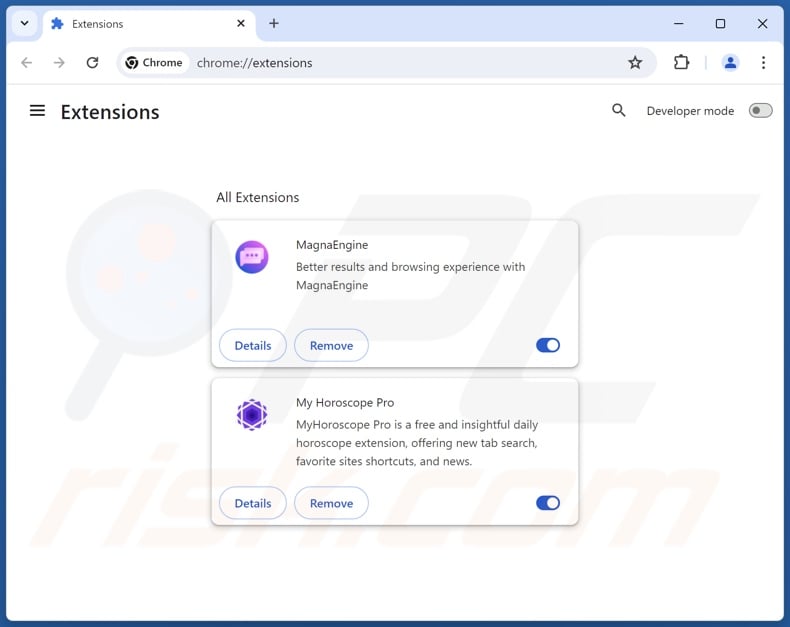
Optional method:
If you continue to have problems with removal of the safedomain guardian potentially unwanted application, reset your Google Chrome browser settings. Click the Chrome menu icon ![]() (at the top right corner of Google Chrome) and select Settings. Scroll down to the bottom of the screen. Click the Advanced… link.
(at the top right corner of Google Chrome) and select Settings. Scroll down to the bottom of the screen. Click the Advanced… link.
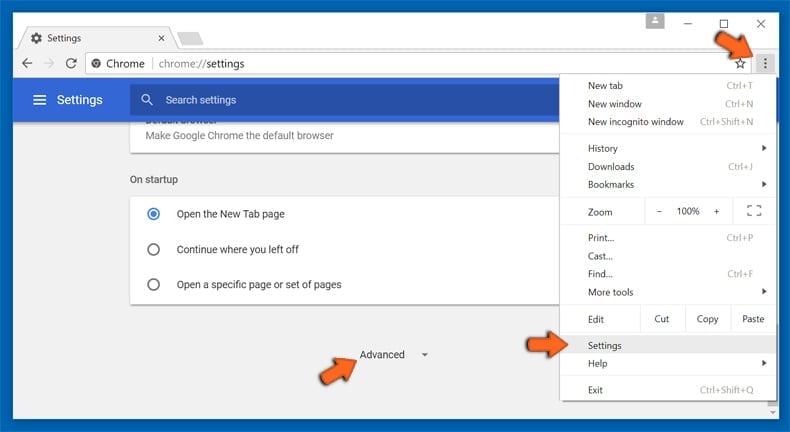
After scrolling to the bottom of the screen, click the Reset (Restore settings to their original defaults) button.
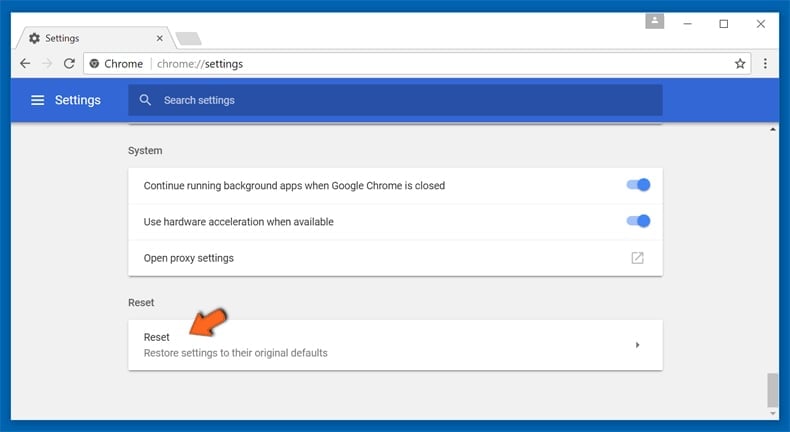
In the opened window, confirm that you wish to reset Google Chrome settings to default by clicking the Reset button.
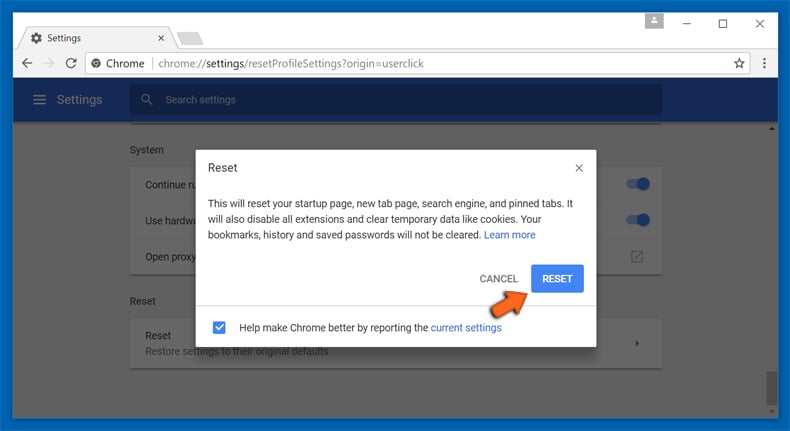
 Remove malicious plugins from Mozilla Firefox:
Remove malicious plugins from Mozilla Firefox:
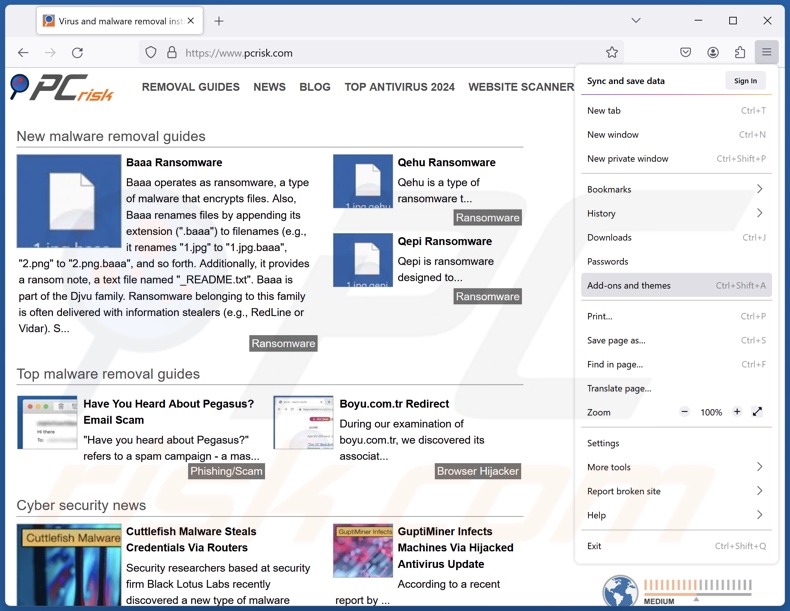
Click the Firefox menu ![]() (at the top right corner of the main window), select "Add-ons and themes". Click "Extensions", in the opened window locate all recently-installed suspicious extensions, click on the three dots and then click "Remove".
(at the top right corner of the main window), select "Add-ons and themes". Click "Extensions", in the opened window locate all recently-installed suspicious extensions, click on the three dots and then click "Remove".
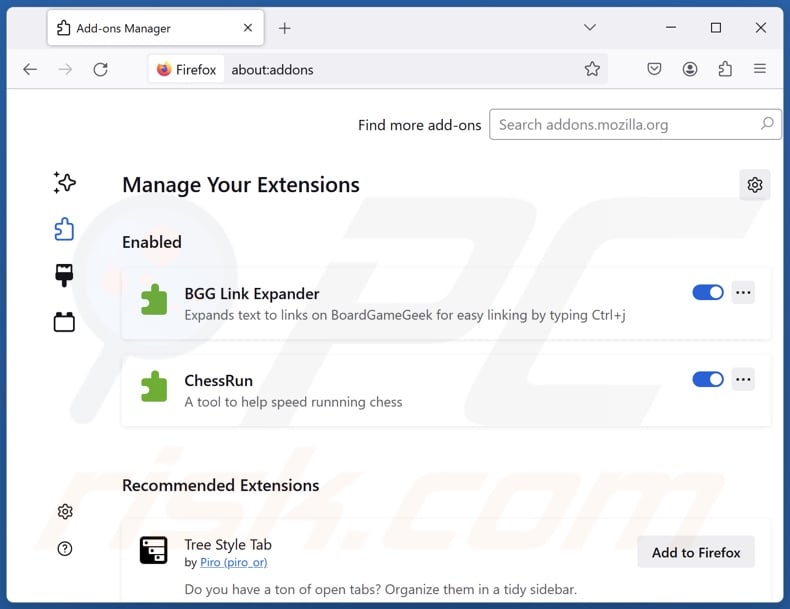
Optional method:
Computer users who have problems with safedomain guardian potentially unwanted application removal can reset their Mozilla Firefox settings.
Open Mozilla Firefox, at the top right corner of the main window, click the Firefox menu, ![]() in the opened menu, click Help.
in the opened menu, click Help.
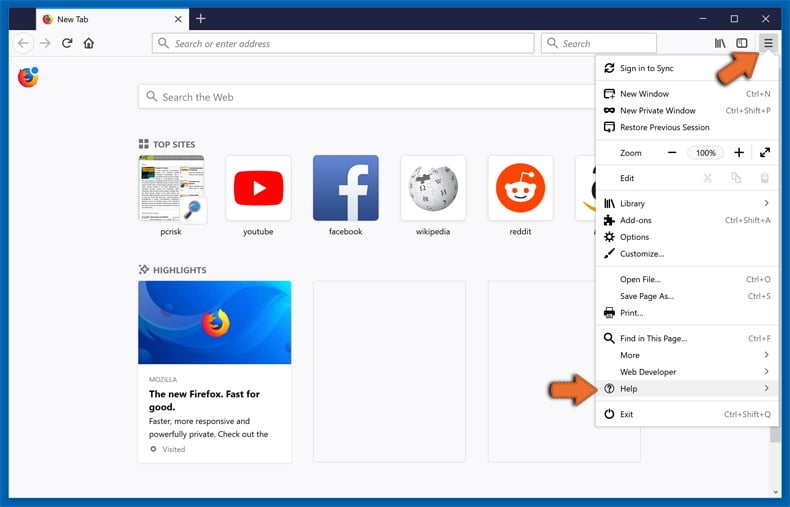
Select Troubleshooting Information.
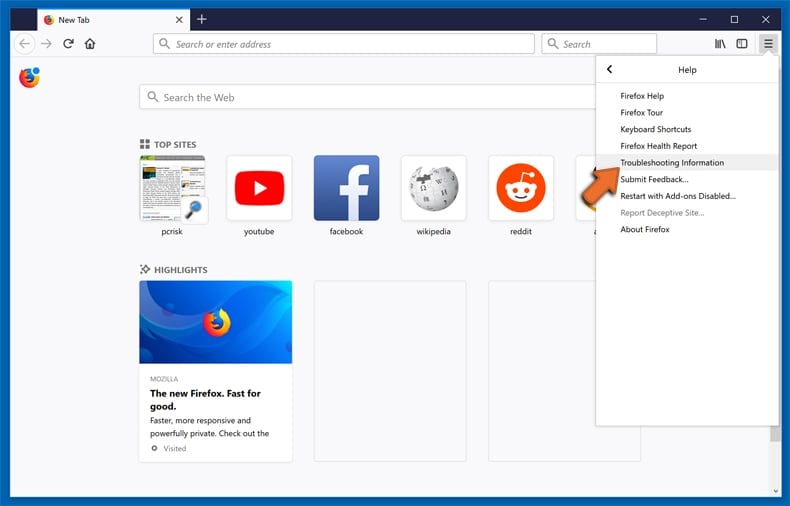
In the opened window, click the Refresh Firefox button.
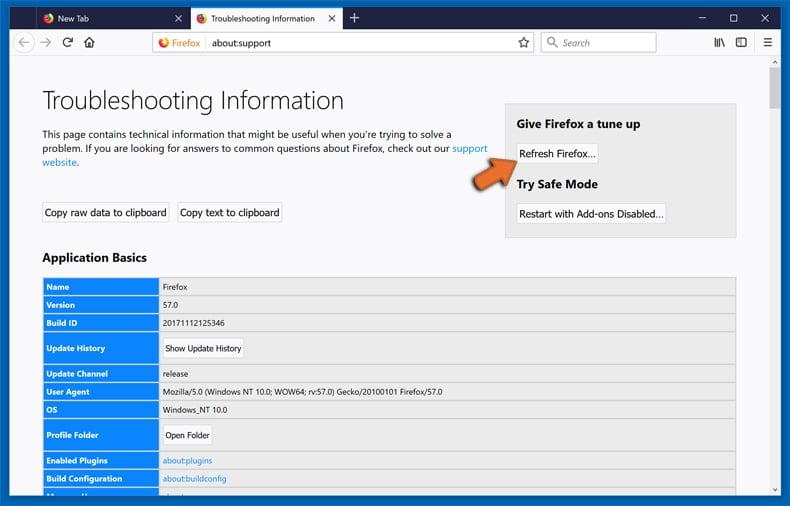
In the opened window, confirm that you wish to reset Mozilla Firefox settings to default by clicking the Refresh Firefox button.
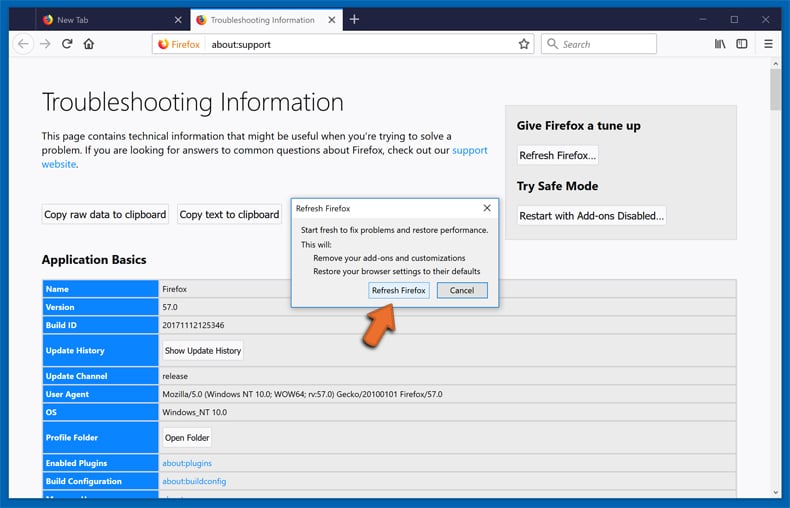
 Remove malicious extensions from Safari:
Remove malicious extensions from Safari:
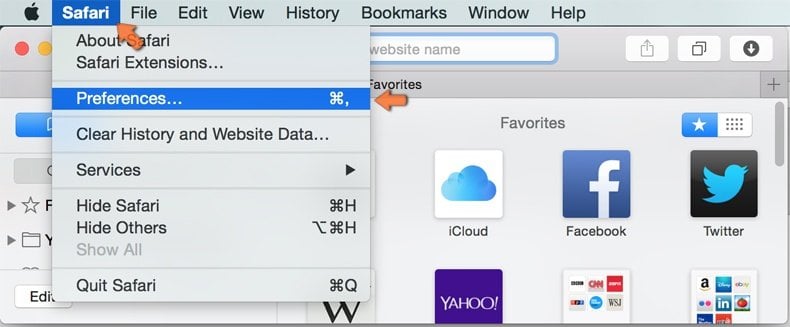
Make sure your Safari browser is active, click Safari menu, and select Preferences....
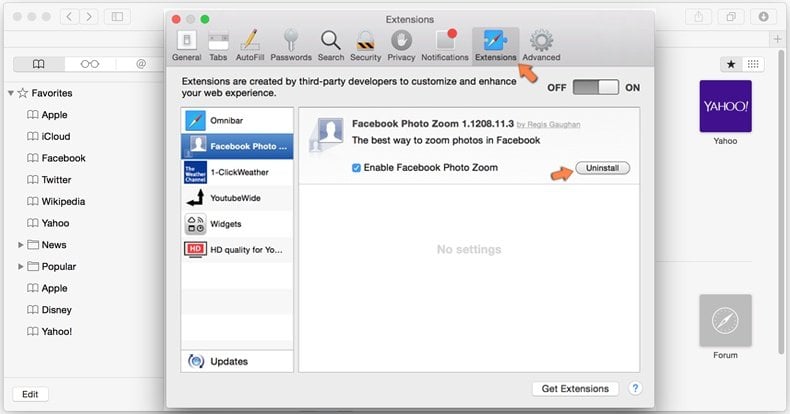
In the opened window click Extensions, locate any recently installed suspicious extension, select it and click Uninstall.
Optional method:
Make sure your Safari browser is active and click on Safari menu. From the drop down menu select Clear History and Website Data...
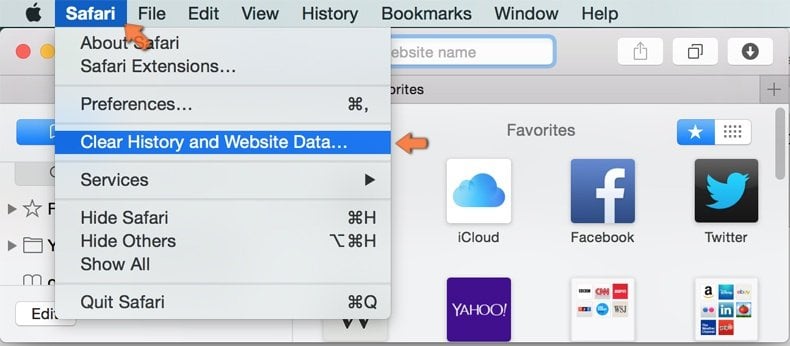
In the opened window select all history and click the Clear History button.
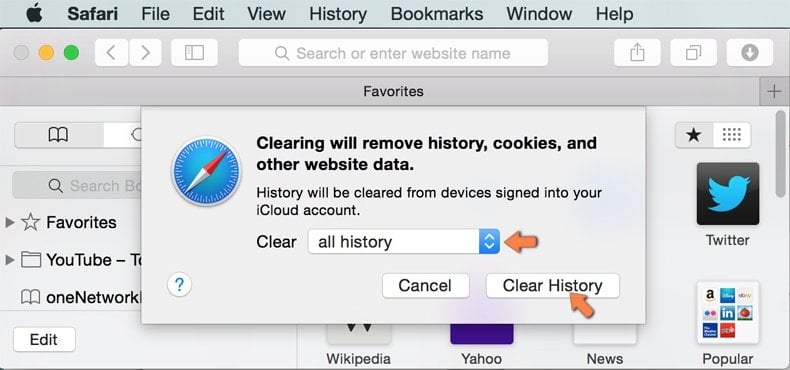
 Remove malicious extensions from Microsoft Edge:
Remove malicious extensions from Microsoft Edge:
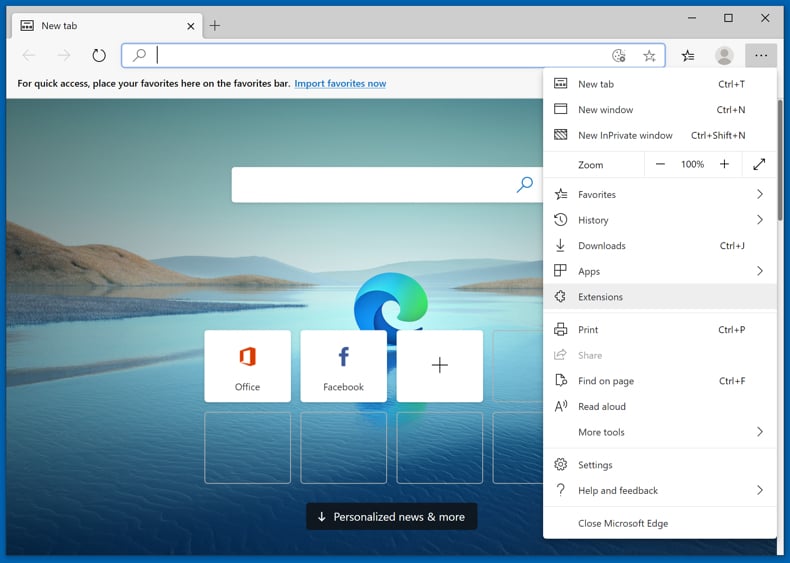
Click the Edge menu icon ![]() (at the upper-right corner of Microsoft Edge), select "Extensions". Locate all recently-installed suspicious browser add-ons and click "Remove" below their names.
(at the upper-right corner of Microsoft Edge), select "Extensions". Locate all recently-installed suspicious browser add-ons and click "Remove" below their names.
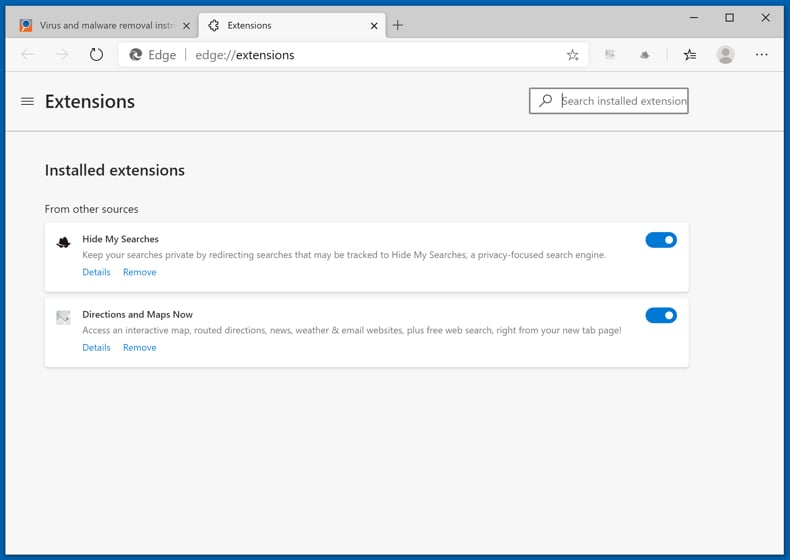
Optional method:
If you continue to have problems with removal of the safedomain guardian potentially unwanted application, reset your Microsoft Edge browser settings. Click the Edge menu icon ![]() (at the top right corner of Microsoft Edge) and select Settings.
(at the top right corner of Microsoft Edge) and select Settings.
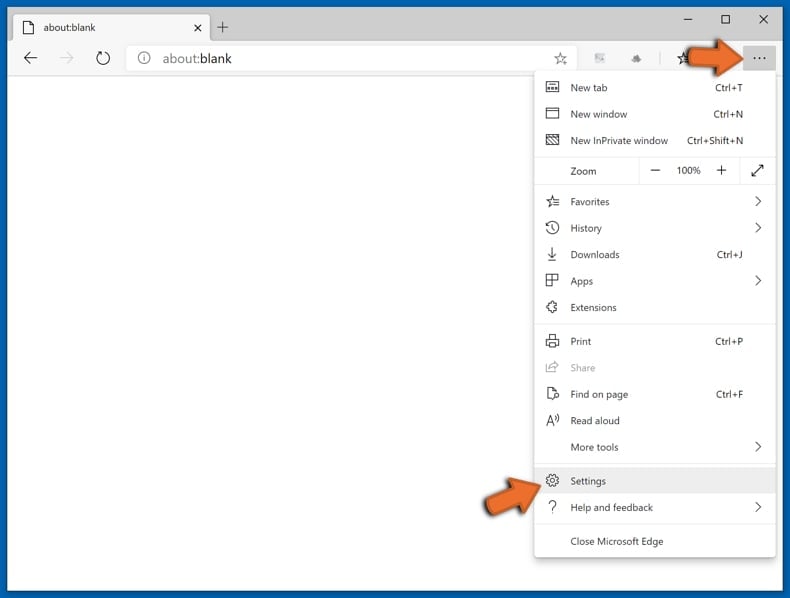
In the opened settings menu select Reset settings.
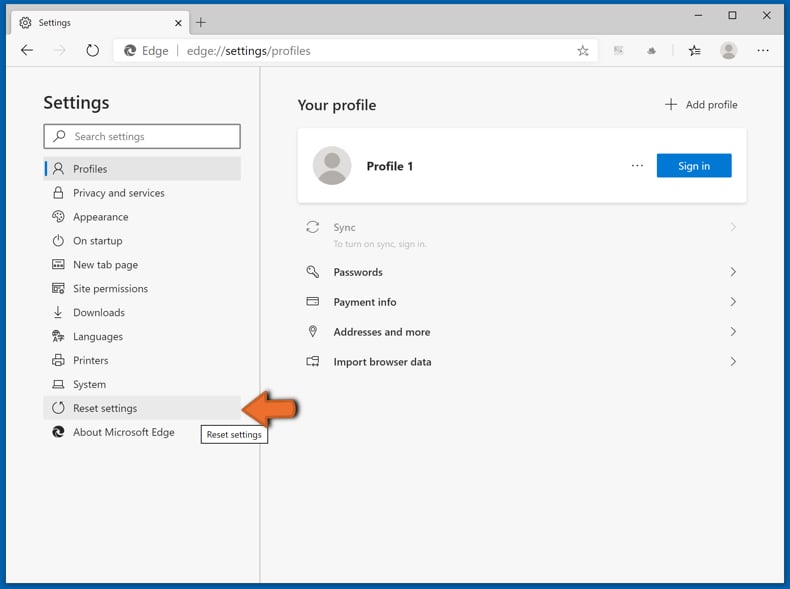
Select Restore settings to their default values. In the opened window, confirm that you wish to reset Microsoft Edge settings to default by clicking the Reset button.
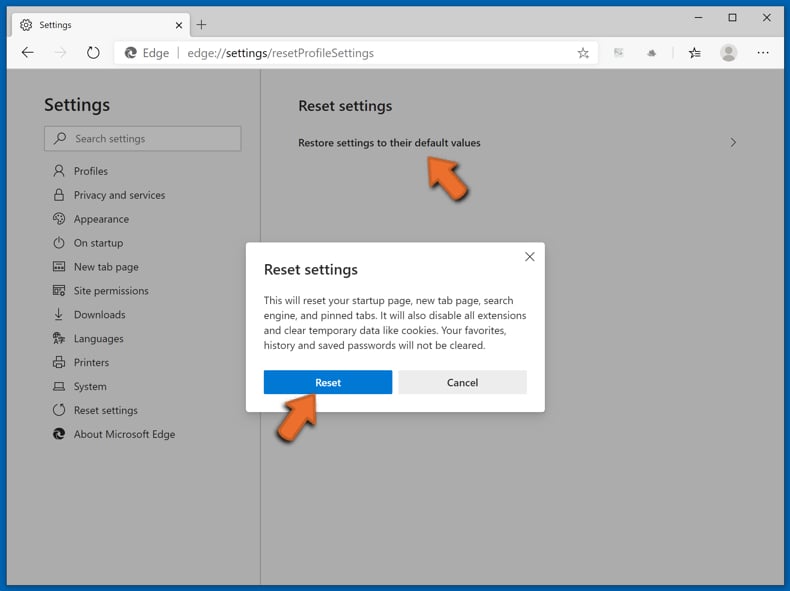
- If this did not help, follow these alternative instructions explaining how to reset the Microsoft Edge browser.
Summary:
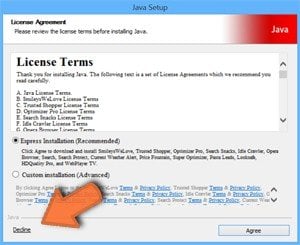 Commonly, adware or potentially unwanted applications infiltrate Internet browsers through free software downloads. Note that the safest source for downloading free software is via developers' websites only. To avoid installation of adware, be very attentive when downloading and installing free software. When installing previously-downloaded free programs, choose the custom or advanced installation options – this step will reveal any potentially unwanted applications listed for installation together with your chosen free program.
Commonly, adware or potentially unwanted applications infiltrate Internet browsers through free software downloads. Note that the safest source for downloading free software is via developers' websites only. To avoid installation of adware, be very attentive when downloading and installing free software. When installing previously-downloaded free programs, choose the custom or advanced installation options – this step will reveal any potentially unwanted applications listed for installation together with your chosen free program.
Post a comment:
If you have additional information on safedomain guardian potentially unwanted application or it's removal please share your knowledge in the comments section below.
Frequently Asked Questions (FAQ)
What is the purpose of an unwanted application?
The purpose of unwanted apps is to generate revenue for their developers, and this goal is usually achieved through nefarious means. To elaborate, these applications may trick users into buying fake activation keys, endorse content (via ads, redirects, etc.), promote dubious in-app purchases, gather/sell private information, and so forth.
Is SafeDomain Guardian unwanted application legal?
Typically, unwanted applications are considered legal because their EULAs (End User License Agreements) inform users on how the software operates.
Is having SafeDomain Guardian installed on my computer dangerous?
Because unwanted applications tend to have harmful capabilities, they are associated with certain threats. However, the exact risks depend on the software's abilities and the developers' goals. Generally, unwanted apps may lead to system infections, serious privacy issues, financial losses, and identity theft.
Will Combo Cleaner help me remove SafeDomain Guardian unwanted application?
Combo Cleaner can scan devices and remove installed unwanted/malicious applications. It must be mentioned that manual removal (performed without the aid of security programs) might not be a perfect solution. In some instances, after an app has been manually removed – various remnants (files) stay hidden within the system. The remaining components might continue to run and cause issues. Hence, it is paramount to eliminate unwanted software thoroughly.
Share:

Tomas Meskauskas
Expert security researcher, professional malware analyst
I am passionate about computer security and technology. I have an experience of over 10 years working in various companies related to computer technical issue solving and Internet security. I have been working as an author and editor for pcrisk.com since 2010. Follow me on Twitter and LinkedIn to stay informed about the latest online security threats.
PCrisk security portal is brought by a company RCS LT.
Joined forces of security researchers help educate computer users about the latest online security threats. More information about the company RCS LT.
Our malware removal guides are free. However, if you want to support us you can send us a donation.
DonatePCrisk security portal is brought by a company RCS LT.
Joined forces of security researchers help educate computer users about the latest online security threats. More information about the company RCS LT.
Our malware removal guides are free. However, if you want to support us you can send us a donation.
Donate
▼ Show Discussion